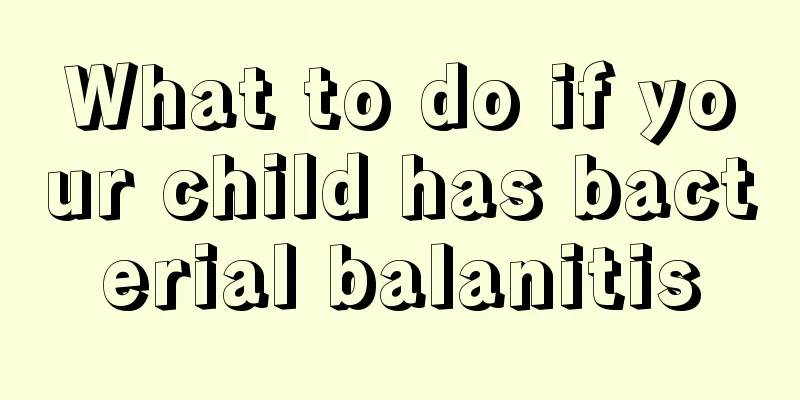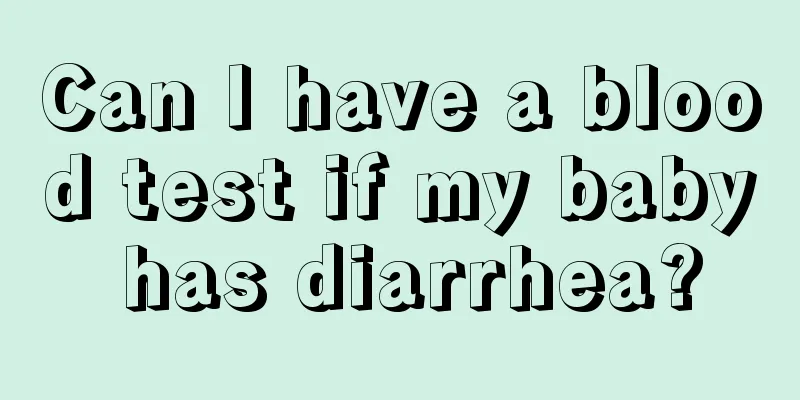What to do if the baby's belly button is bulging and inflamed

|
Many mothers feel that it is not easy for them to be pregnant for ten months, so they take good care of their own children. The purpose is our maternal care and we want our babies to grow up healthily. However, some things will always happen in the process of growth. If our child has a bulging belly button and inflammation, what should we do? Have you ever thought about this? Let us introduce it to you below! What to do if your child's belly button is inflamed After the fetus is born, the umbilical cord is tied and cut, leaving a bluish-white stump. After a few hours, the stump turns brown-white. Then it gradually dries up, becomes thinner, and turns black. The umbilical stump usually falls off within 3 to 7 days after birth. When the umbilical cord first falls off, the wound surface is red and slightly moist, and it heals completely after a few days. Later, due to the contraction of the umbilical blood vessels inside the body, the skin is pulled and sunken to form the umbilical pit, commonly known as the "belly button". Generally, the gauze bandage should be opened and no longer bandaged 24 hours after the baby is born to promote the drying and falling of the umbilical cord stump. When handling the umbilical cord, wash your hands, pinch the umbilical cord, lift it gently, and use a 75% disinfectant alcohol cotton swab to disinfect the base of the umbilical cord. Wipe off all secretions and blood. Do this 1 to 2 times a day to keep the base of the umbilical cord clean. At the same time, diapers must be changed frequently to prevent urine and feces from contaminating the navel. If you find purulent secretions at the base of the navel and the navel is locally red, it means that you have omphalitis and you should go to the hospital for treatment. Small belly button, big problem Omphalitis The umbilical depression is very prone to water and dirt accumulation, and the humid and warm environment provides opportunities for the growth and reproduction of bacteria. In mild cases of omphalitis, the navel will exude fluid or have turbid purulent secretions; in severe cases, bacteria will enter the blood circulation and cause sepsis. For mild omphalitis, apply 2% gentian violet solution topically and keep the navel dry; if there is purulent secretion, use antibiotics for treatment. Severe cases should be treated in hospital. Okay, the above is some basic description of what to do if a child’s belly button is inflamed. After reading it, do you feel that raising a child is particularly difficult? We should not underestimate the belly button. In fact, if we are not careful with the belly button, it will cause a series of symptoms such as stomach pain and inflammation. Are we wondering whether it was particularly difficult for our mothers to raise us? |
<<: What should I do if my four-month-old baby has trouble sleeping?
>>: Is massage effective for children with fever?
Recommend
What to do if your baby gets diarrhea after eating dragon fruit
The baby is still so young, and there are many fo...
What are the effects of blue light exposure on children?
Blue light therapy is an important treatment opti...
Nursing measures for convulsions in children
I believe many parents are familiar with pediatri...
What to do if your child's hands and feet are hot
Some children are relatively weak and their physi...
What vitamins are good for children?
Many parents are worried that their children may ...
Treatment for newborn spit-up
Newborn spitting up often makes our parents at a ...
What happens when a child vomits at night?
Many mothers will find that their babies vomit at...
Will teething cause fever?
I believe that many mothers have found that when ...
Treatment for children with Asperger's syndrome
As parents, when our children become sick, we are...
Introduction to treatment methods for ADHD
ADHD is a disease that often occurs in children d...
Symptoms of sore throat in newborns
Throat inflammation is a common symptom in newbor...
The child has a fever but is in good spirits
It is a common physical illness for children to h...
The child has a bald patch
Parents are always concerned about their children...
Be careful when placing items in children's bathrooms
In order to prevent their babies from touching da...
What to do if the child keeps crying
It is very normal for children to cry in life. Bu...









